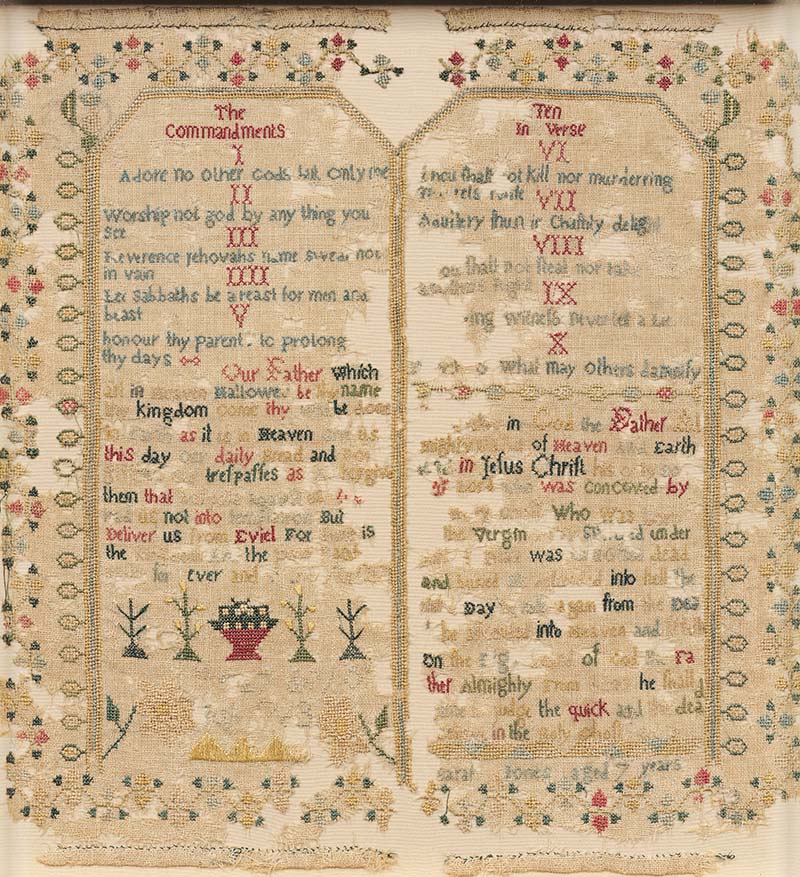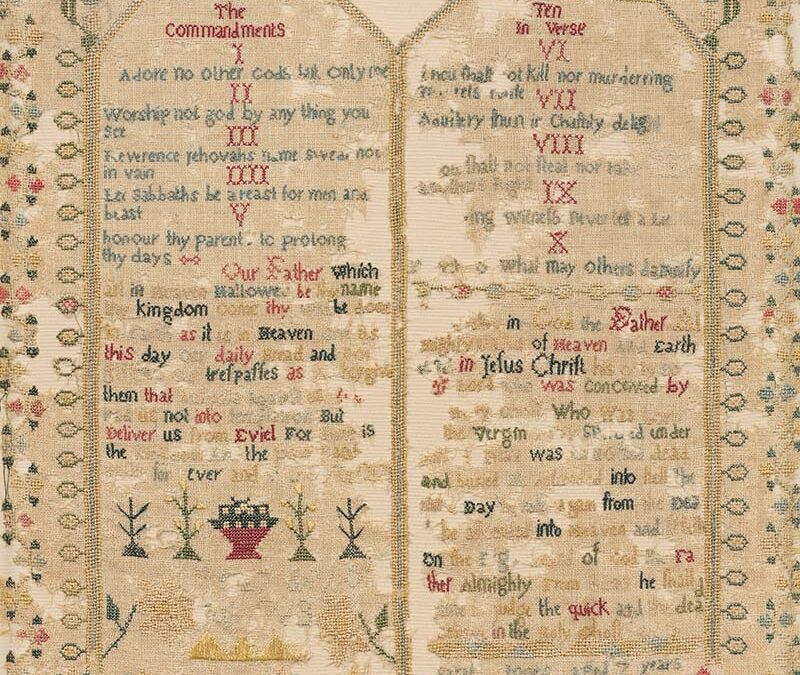
| Maker | Sarah Jones |
| Date of Creation | 1763 |
| Location | Probably Savannah, Georgia |
| Materials | Silk on linen |
| Institution | Telfair Museums |
| Credit Line | Gift of Mrs. Hubert Bond Owens |
| Accession Number | 1971.4 |
| Photo Credit | Telfair Museums |
This sampler by Sarah Jones (later Glen, c. 1756–1804) is one of the oldest known with Georgia provenance. It was passed down through the women in her family until its donation to Telfair Museums. Jones completed it roughly 30 years after her grandfather, Noble Jones (1702–75), first emigrated from England with James Oglethorpe to the new colony in 1733. Among his land holdings, Jones established Wormslow Plantation (now Wormsloe State Historic Site) in the late 1730s, and her father, physician Noble Wimberly Jones (c. 1723–1805), likewise accumulated large amounts of land and several lots in the city of Savannah. Like many white landholders in coastal Georgia, the Jones family enslaved numerous individuals of African descent on these properties, and this exploitation contributed enormously to the Jones’ accumulation of wealth. It also afforded Sarah a life with more privileges and access to education than most girls her age. Since the family spent little time outside Savannah, it is believed that she created the sampler here, probably under the guidance of a private tutor. The American Revolution directly affected Sarah. She saw her husband John Glen (1744–99) elected Georgia’s first chief justice in 1776, the fall of Savannah to the British in 1778, the British imprisonment of her father in St. Augustine and her husband in Charleston, her husband’s return to Savannah and change of allegiance, and then his banishment from Savannah after the war. Through all this, Sarah and her children remained in Savannah, and she eventually petitioned the Georgia Assembly in 1784, possibly on her husband’s behalf. His citizenship in the state was restored the following year. After John’s death in 1799, Sarah traveled with her family, including several of her ten children, to Connecticut, where she died in 1804.

